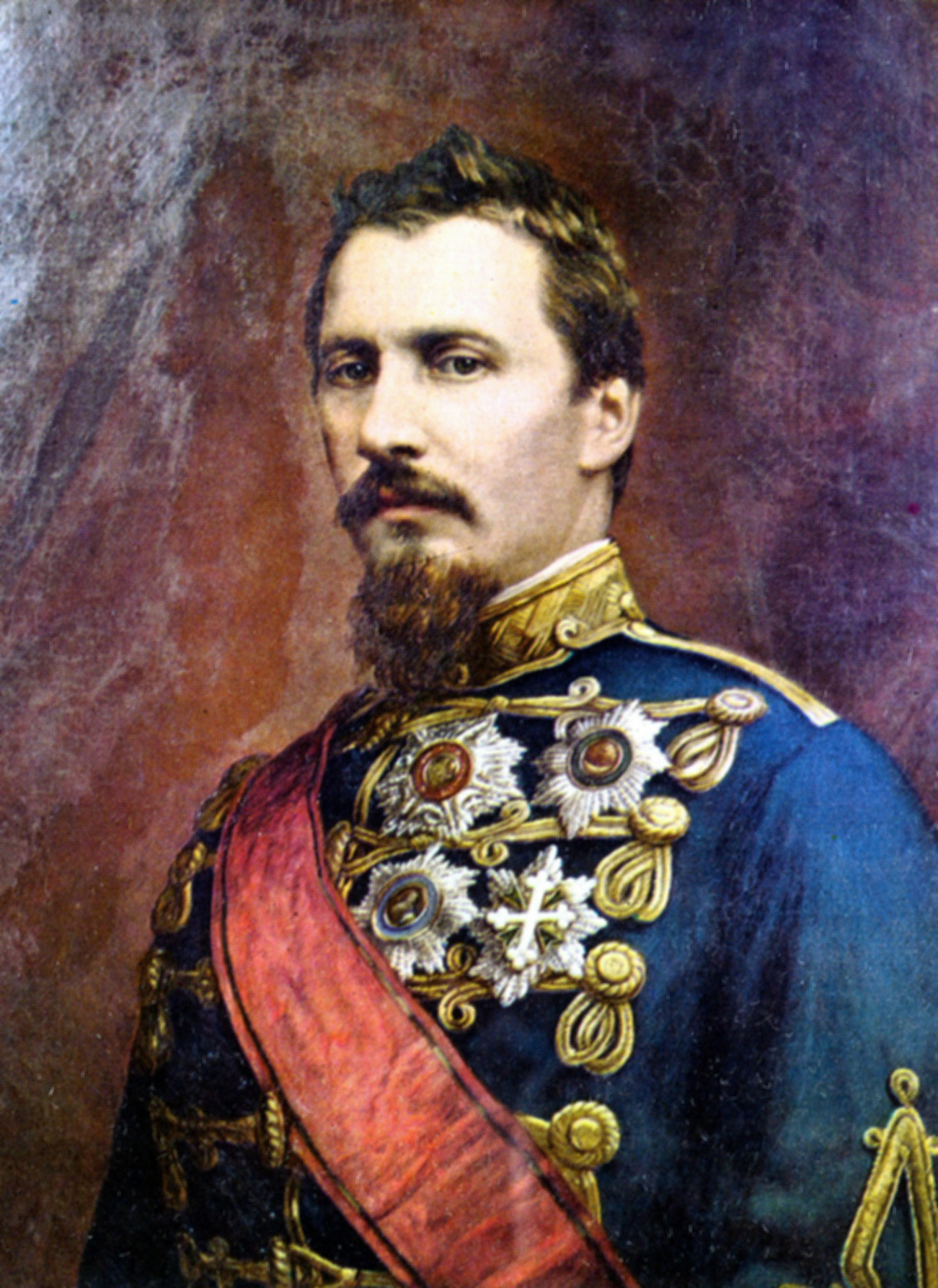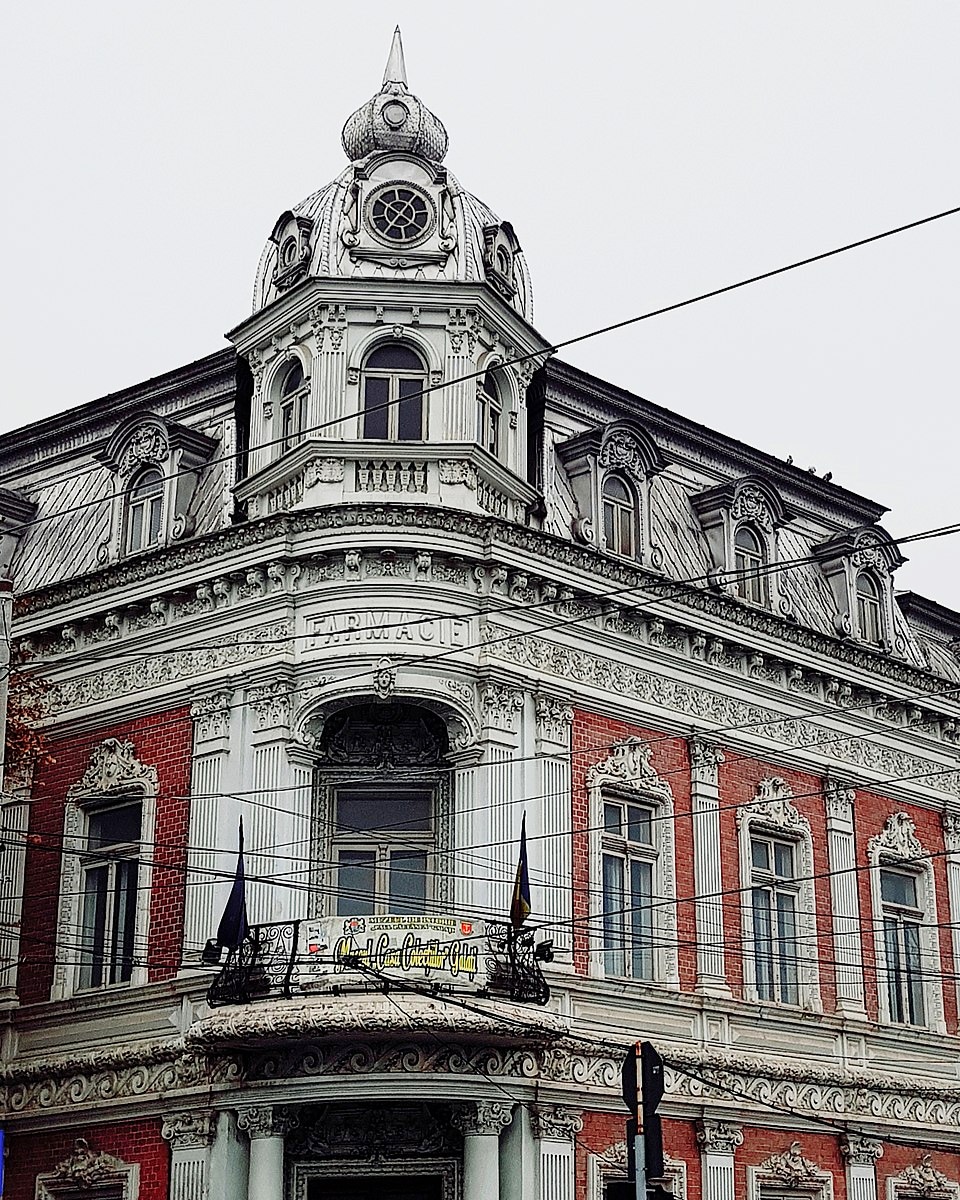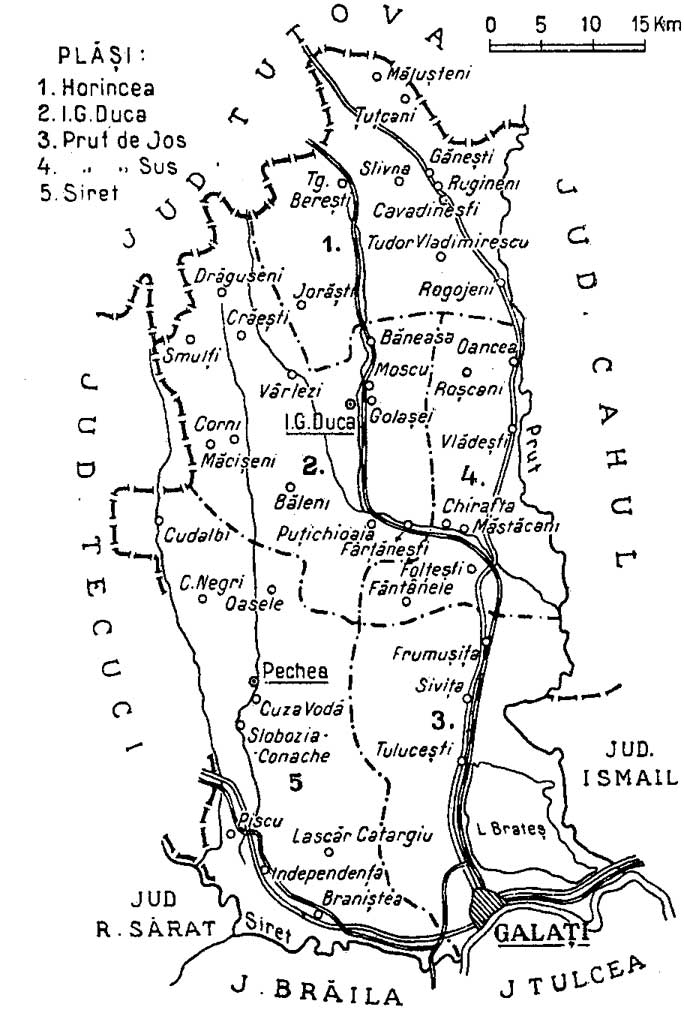|
Eremia Grigorescu
Eremia Teofil Grigorescu (28 November 1863 – 21 July 1919) was a Romanian artillery general during World War I, and Minister of War in the Constantin Coandă cabinet (October–November 1918). Early life Born in 1863 in the village Golășei (Bujor Sat) near Târgu Bujor, in Covurlui County, now Galați County, he studied at the Vasile Alecsandri High School in Galați from 1870 to 1878, and then to the Costache Negruzzi National College in Iași from 1878 to 1881. He then attended for a year the Faculty of Medicine of the University of Iași, before transferring to the Military School for Infantry and Cavalry in Bucharest. After graduating in 1884 with the rank of second lieutenant, Grigorescu pursued his studies in France, taking mathematics courses at the Sorbonne. He also attended special artillery and administration courses at the Military School of Saint-Cyr and at the French Ministry of War. In 1903 he was appointed director of the Artillery section at the War M ... [...More Info...] [...Related Items...] OR: [Wikipedia] [Google] [Baidu] |
Flag Of Romania
The national flag of Romania ( ro, drapelul României) is a tricolour. The Constitution of Romania states that "The flag of Romania is tricolour; the colours are arranged vertically in the following order from the flagpole: blue, yellow, red". The flag has a width-length ratio of 2:3; the proportions, shades of colour as well as the flag protocol were established by law in 1994, and extended in 2001. The civil flag of Andorra and the state flag of Chad are very similar to the Romanian national flag. The similarity with Chad's flag, which is identical apart from allowing a broader range of shades of blue, yellow and red, has caused international discussion. In 2004, Chad asked the United Nations to examine the issue. However, then-president of Romania Ion Iliescu announced that there would be no changes to the flag. The flag of Moldova is similar to the Romanian tricolour, except that it has a 1:2 ratio, a lighter shade of blue, a slightly different shade of yellow, and the ... [...More Info...] [...Related Items...] OR: [Wikipedia] [Google] [Baidu] |
Legion Of Honour
The National Order of the Legion of Honour (french: Ordre national de la Légion d'honneur), formerly the Royal Order of the Legion of Honour ('), is the highest French order of merit, both military and civil. Established in 1802 by Napoleon Bonaparte, it has been retained (with occasional slight alterations) by all later French governments and regimes. The order's motto is ' ("Honour and Fatherland"); its seat is the Palais de la Légion d'Honneur next to the Musée d'Orsay, on the left bank of the Seine in Paris. The order is divided into five degrees of increasing distinction: ' ( Knight), ' (Officer), ' ( Commander), ' (Grand Officer) and ' ( Grand Cross). History Consulate During the French Revolution, all of the French orders of chivalry were abolished and replaced with Weapons of Honour. It was the wish of Napoleon Bonaparte, the First Consul, to create a reward to commend civilians and soldiers. From this wish was instituted a , a body of men that was n ... [...More Info...] [...Related Items...] OR: [Wikipedia] [Google] [Baidu] |
Adevărul
''Adevărul'' (; meaning "The Truth", formerly spelled ''Adevĕrul'') is a Romanian daily newspaper, based in Bucharest. Founded in Iași, in 1871, and reestablished in 1888, in Bucharest, it was the main left-wing press venue to be published during the Romanian Kingdom's existence, adopting an independent pro- democratic position, advocating land reform, and demanding universal suffrage. Under its successive editors Alexandru Beldiman and Constantin Mille, it became noted for its virulent criticism of King Carol I. This stance developed into a republican and socialist agenda, which made ''Adevărul'' clash with the Kingdom's authorities on several occasions. As innovative publications which set up several local and international records during the early 20th century, ''Adevărul'' and its sister daily ''Dimineața'' competed for the top position with the right-wing '' Universul'' before and throughout the interwar period. In 1920, ''Adevărul'' also began publishing its presti ... [...More Info...] [...Related Items...] OR: [Wikipedia] [Google] [Baidu] |
Alexandru Ioan Cuza University
The Alexandru Ioan Cuza University (Romanian: ''Universitatea „Alexandru Ioan Cuza"''; acronym: UAIC) is a public university located in Iași, Romania. Founded by an 1860 decree of Prince Alexandru Ioan Cuza, under whom the former Academia Mihăileană was converted to a university, the University of Iași, as it was named at first, is one of the oldest universities of Romania, and one of its advanced research and education institutions. It is one of the five members of the ''Universitaria Consortium'' (the group of elite Romanian universities). The Alexandru Ioan Cuza University offers study programmes in Romanian, English, and French. In 2008, for the third year in a row, it was placed first in the national research ranking compiled on the basis of Shanghai criteria. In the 2012 QS World University Rankings, Alexandru Ioan Cuza University was included in the Top 700 universities of the world, on the position 601+ , together with three other Romanian universities. The univer ... [...More Info...] [...Related Items...] OR: [Wikipedia] [Google] [Baidu] |
Iași
Iași ( , , ; also known by other alternative names), also referred to mostly historically as Jassy ( , ), is the second largest city in Romania and the seat of Iași County. Located in the historical region of Moldavia, it has traditionally been one of the leading centres of Romanian social, cultural, academic and artistic life. The city was the capital of the Principality of Moldavia from 1564 to 1859, then of the United Principalities from 1859 to 1862, and the capital of Romania from 1916 to 1918. Known as the Cultural Capital of Romania, Iași is a symbol of Romanian history. Historian Nicolae Iorga stated that "there should be no Romanian who does not know of it". Still referred to as "The Moldavian Capital", Iași is the main economic and business centre of Romania's Moldavian region. In December 2018, Iași was officially declared the Historical Capital of Romania. At the 2011 census, the city-proper had a population of 290,422 (making it the fourth most populou ... [...More Info...] [...Related Items...] OR: [Wikipedia] [Google] [Baidu] |
Costache Negruzzi National College
The Costache Negruzzi National College (''Colegiul Național „Costache Negruzzi”'') in Iași is one of the most prestigious high schools in Romania. Founded in 1895 as the ''Boarding High School of Iași'', it was named after the writer and politician Costache Negruzzi. History The Boarding High School of Iași opened its gates on 5 October 1895, following an English boarding school model, focused on a wide range of children (of different social and cultural statuses and religions) from the Romanian Old Kingdom and Transylvania Transylvania ( ro, Ardeal or ; hu, Erdély; german: Siebenbürgen) is a historical and cultural region in Central Europe, encompassing central Romania. To the east and south its natural border is the Carpathian Mountains, and to the west the Ap .... Notable staff and alumni References External links *Official site {{DEFAULTSORT:Costache Negruzzi National College Educational institutions established in 1895 Negruzzi National Colleg ... [...More Info...] [...Related Items...] OR: [Wikipedia] [Google] [Baidu] |
Galați
Galați (, , ; also known by other alternative names) is the capital city of Galați County in the historical region of Western Moldavia, in eastern Romania. Galați is a port town on the Danube River. It has been the only port for the most part of Moldavia's existence. In 2011, the Romanian census recorded 249,432 residents, making it the 8th most populous city in Romania. Galați is an economic centre based around the port of Galați, the naval shipyard, and the largest steel factory in Romania, Galați steel works. Etymology and names The name ''Galați'' is derived from the Cuman word . This word is ultimately borrowed from the Persian word , "fortress". Other etymologies have been suggested, such as the Serbian . However, the ''galat'' root appears in nearby toponyms, some of which show clearly a Cuman origin, for example Gălățui Lake, which has the typical Cuman -''ui'' suffix for "water". Another toponym in the region is Galicia, with its town of Halych, locall ... [...More Info...] [...Related Items...] OR: [Wikipedia] [Google] [Baidu] |
Vasile Alecsandri National College (Galați)
Vasile Alecsandri National College ( ro, Colegiul Național "Vasile Alecsandri") is a public day high school in Galați, Romania, located at 41 Nicolae Bălcescu Street. In the mid-1860s, amidst increased economic development, the lack of a gymnasium in Galați became apparent. Thus, after repeated petitions, in August 1867 the Education Ministry authorized the establishment of a school with a single class. Three months later, the school opened its doors in a public ceremony; the principal, from Transylvania, had two teachers working under him. During its first twenty years, twenty-eight teachers worked at the gymnasium, and over 1500 pupils studied there, most prominently Eremia Grigorescu (1874–1878). In 1887, the institution was declared a high school, with seven grades. The school building was completed in 1890; two years later, it was named after the poet Vasile Alecsandri. Also in 1890, academic V. A. Urechia (who represented the Galați area in the Senate) donated his per ... [...More Info...] [...Related Items...] OR: [Wikipedia] [Google] [Baidu] |
Galați County
Galați () is a county (județ) of Romania, in Moldavia region, with the capital city at Galați. History Historically Galați is part of Moldavia. In 1858, it was represented by Alexandru Ioan Cuza at the '' ad hoc Divan'' at Iași, in the wake of the Crimean War. Prior to 1938 what is now eastern Galați was the separate Covurlui County (Județul Covurlui). From 1938 to 1945 Galați was part of Ținutul Dunării (Megacounty Dunării). 2010 Romanian floods During July 2010, the River Siret threatened to break through the dykes protecting the town of Șendreni, as locals and emergency services reinforced the dykes with sandbags trucks full of earth to prevent the river breaking out and flooding the town. Demographics In 2011, it had a population of 536,167 and the population density was 120/km2. * Romanians – over 98% * Russians, Ukrainians, and Romani – 2% Geography This county has a total area of 4,466 km2. The county lies on a low plain, between the ... [...More Info...] [...Related Items...] OR: [Wikipedia] [Google] [Baidu] |
Covurlui County
Covurlui County is one of the historic counties of Moldavia, Romania. The county seat was Galați. In 1938, the county was disestablished and incorporated into the newly formed Ținutul Dunării, but it was re-established in 1940 after the fall of Carol II's regime - only to be abolished 10 years later by the Communist regime. Geography Covurlui County covered 2,662 km2 and was located in Moldavia. Currently, the territory that comprised Covurlui County is now mostly included in the Galați County, with a small northern part in the Vaslui County. In the interwar period, the county neighbored Tutova County to the north, Cahul and Ismail counties to the east, Tulcea County to the southeast, Brăila County Brăila County () is a county (județ) of Romania, in Muntenia, with the capital city at Brăila. Demographics In 2011, Brăila had a population of 304,925 and the population density was 64/km2. * Romanians – 98% * Romani, Russians, Lip ... to the south, Râmnic ... [...More Info...] [...Related Items...] OR: [Wikipedia] [Google] [Baidu] |
Ministry Of Defense (Romania)
The Ministry of National Defence ( ro, Ministerul Apărării Naționale — MApN) is one of the eighteen ministries of the Government of Romania. The current acting Minister of National Defence is . Ministry The Ministry of National Defence is the specialized body of the central public administration submitted to the Government conducting the national defence activity according to the stipulations of law and to the strategy of national security, with a view to safeguarding national sovereignty, state independence and unity, territorial integrity and constitutional democracy. The Ministry of National Defence is responsible to the Parliament, the Supreme Council of National Defence and the Government for implementation of provisions of the Constitution, laws in force, decisions of the Supreme Council of National Defence and of the Government, of international treaties ratified by Romania in fields of its activity. Structure and function The Ministry of National Defence is ... [...More Info...] [...Related Items...] OR: [Wikipedia] [Google] [Baidu] |
Artur Văitoianu
Artur or Arthur Văitoianu (14 April 1864 in Izmail – 17 June 1956) was a Romanian general who served as a Prime Minister of Romania for about two months in 1919 (27 September – 30 November). During his mandate, the first elections of Greater Romania were held. Career Born in Izmail (in Bessarabia, now part of Ukraine), he rose through the ranks of the Romanian Army and, during the World War I Battle of Mărăști, he commanded the Second Corps. Earlier in the War, during the Romanian Campaign of 1916, he commanded the 10th Infantry Division at the Battle of Predeal Pass, in defense of Prahova Valley. He managed to block the Central Powers from reaching Bucharest via the shortest way, thus preventing them from cutting off and surrounding the Romanian Army and by implication knock the country out of the war. It was a decisive victory that enabled Romania to wage war until 1918, when it had to surrender after Russia did the same, leaving Romania alone on the Eastern Fr ... [...More Info...] [...Related Items...] OR: [Wikipedia] [Google] [Baidu] |
.png)




